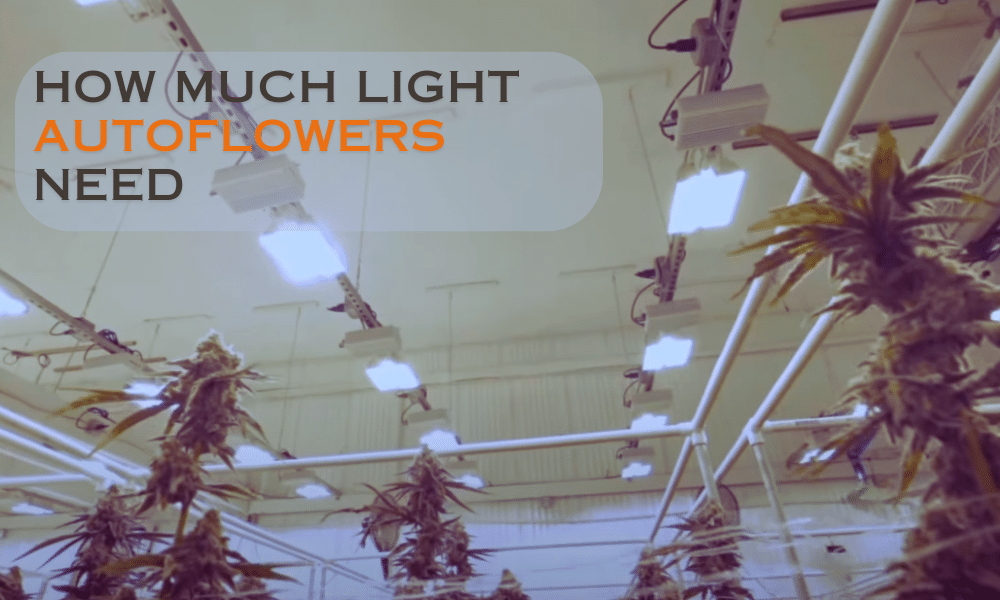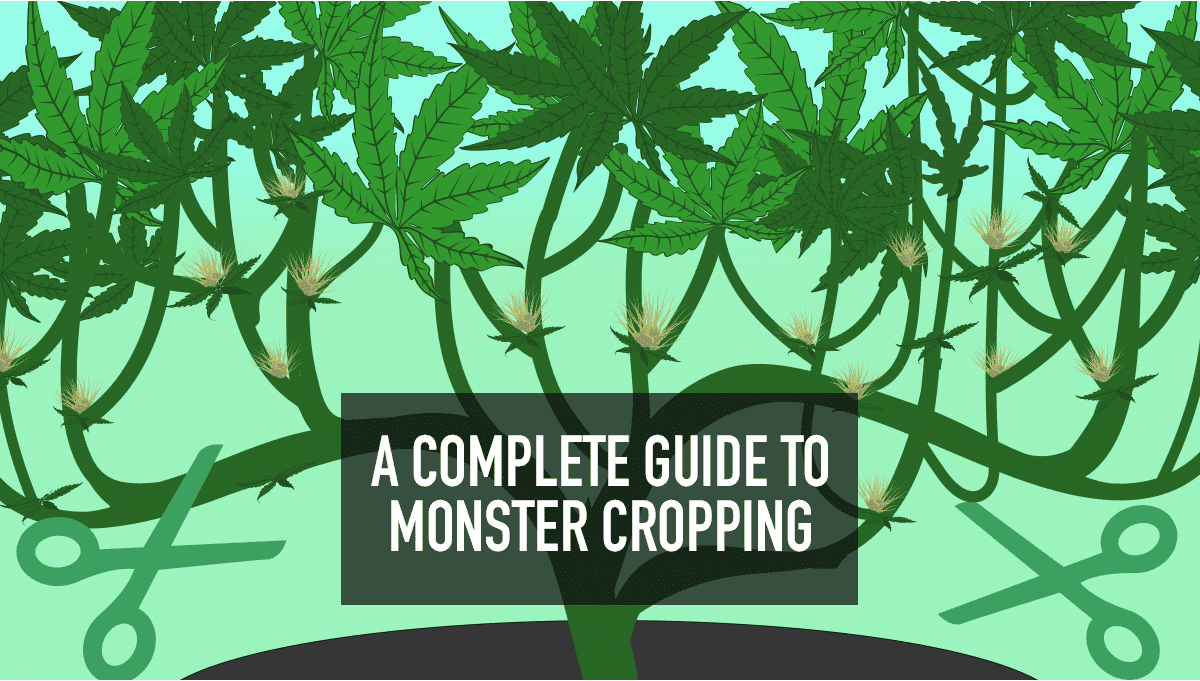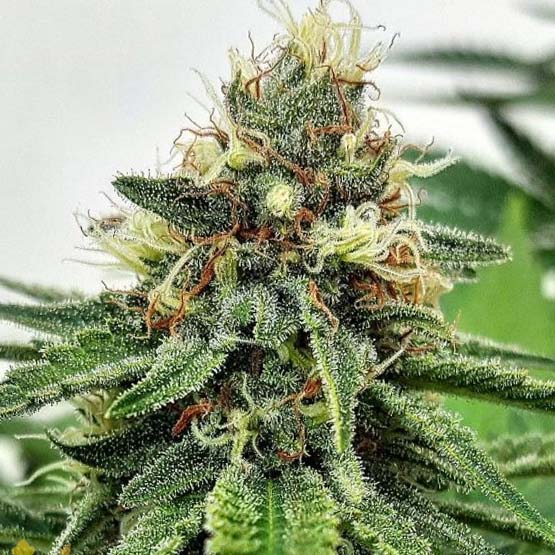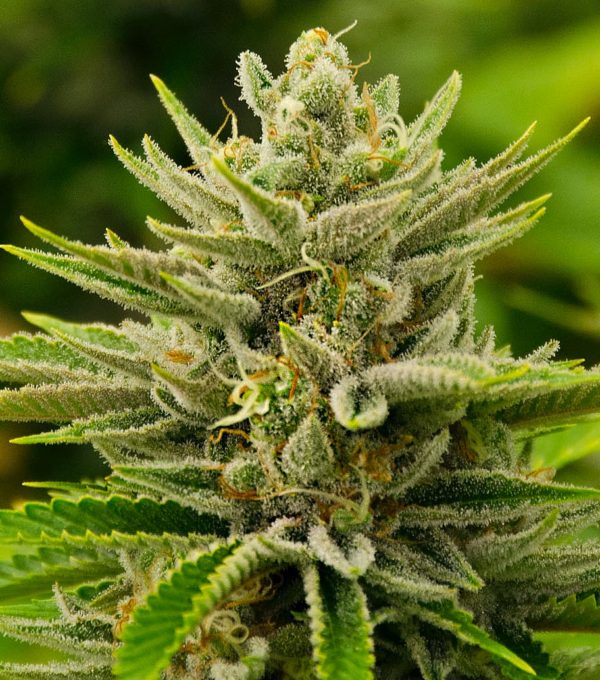No products in the cart.
Marijuana Education
The Best Light Schedule For Autoflowers
Autoflowering seeds offer a wide range of cannabis genetics and no-fuss, worry-free transition from veg to flowering. The biggest variable with autoflowering is the size of the yield – and the right light schedule can help you increase your harvest.
What’s the best light schedule for autoflowers? The 20/4 light cycle.
When to put autoflowers under light?
In the germination stage, autoflower seeds should be left in the dark. During this time, the plant is focusing its energy on root growth to establish the foundation for a strong plant, and roots don’t require light to grow.
For the best germination results, place your autoflower seeds in a warm, moist environment, leave it in the dark, and wait for roots to sprout. One of the easiest ways to germinate an autoflower seed is to place it in a damp paper towel and place the towel inside a plastic bag.
Once roots have sprouted, move your autoflower plant into the soil. Because autoflowers will enter the flowering stage after a certain amount of time, it’s best not to move them between different pots. Plant your seedlings in a pot large enough to hold a mature, flowering cannabis plant to maximize autoflower yields.
You can’t use too much light for cannabis seedlings – wait until your plant has grown its first set of fan leaves before starting your light cycle rotation. This typically takes between 2 – 3 weeks after the initial planting.
What is the best light cycle for autoflowering cannabis?
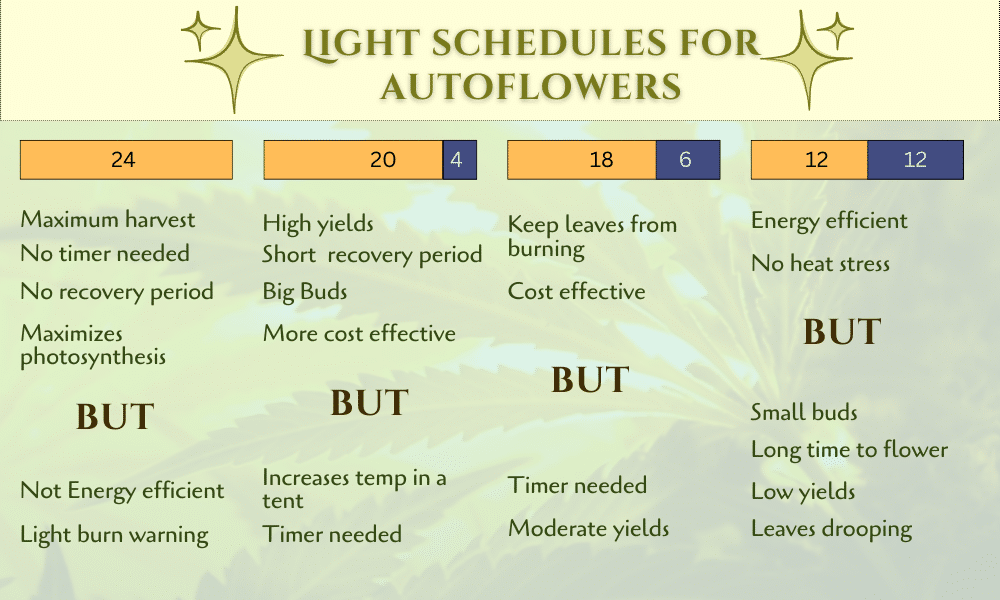
How much light do autoflowers need? There are a few common light cycles that cannabis cultivators swear by: 24/0, 20/4, 18/6, and 12/12.
Unlike photoperiod plants, the amount of light you give won’t change the phase of the autoflower life cycle – the biggest impact that your autoflower light cycle has is on the size of your yield. Using as much light as possible during the vegetative phase helps increase your yield during flowering.
24/0 light cycle for autoflowers
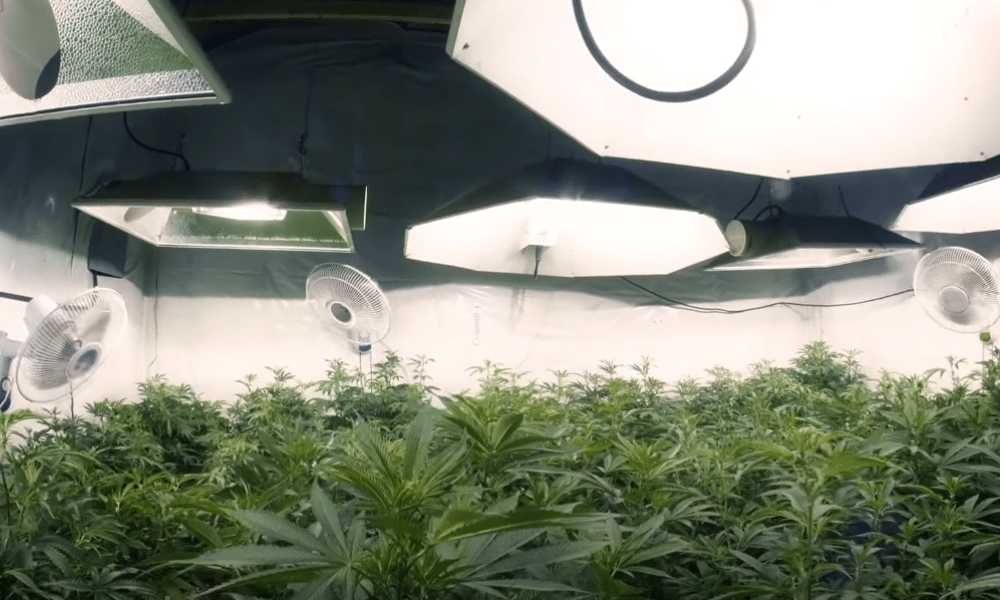
Using 24 hours on and zero hours off means your plant will get the most light possible during its limited grow time – maximizing photosynthesis and growth.
However, your power bills will be quite expensive. 24 hours of light for autoflowers will have a massive impact on your monthly power bill (and may draw some curious attention if you live somewhere that cannabis cultivation is not legal.) Using this much power can also increase the temperature in your grow room, particularly if you live in a warm climate.
Additionally, this autoflower light cycle can also cause light burn on your leaves if the lights are placed too close to the plant. 24 hours of continuous light may also cause your plant’s leaves to droop or wilt since it does not have time to rest.
20/4 light cycle for autoflowers
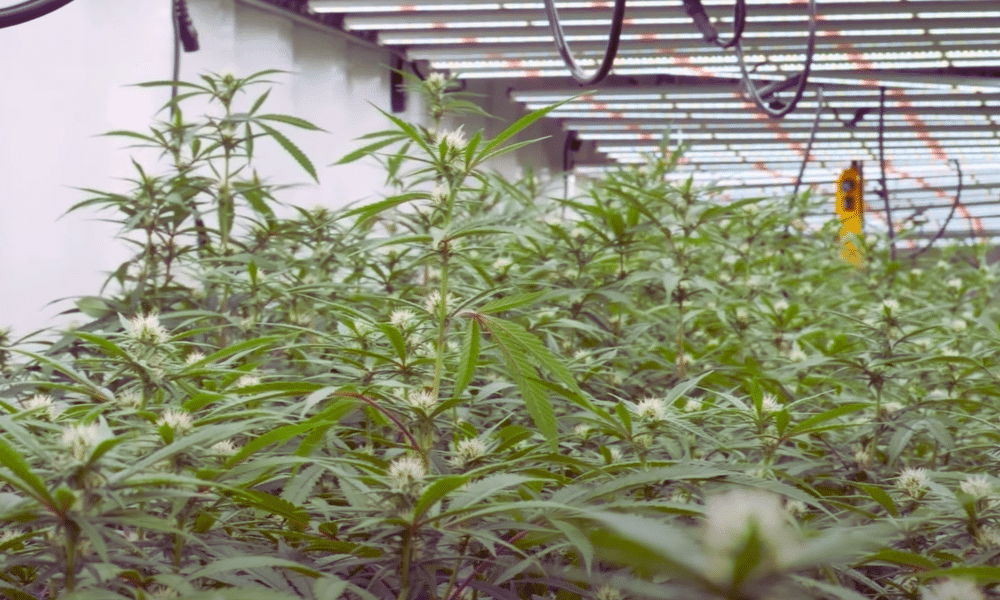
20 hours on, four hours off is the best autoflower light schedule.
With the 20/4 cycle, your plant gets 20 hours of light a day, and four hours of rest. Plants are living beings, and benefit from time to rest.
This autoflowering light schedule still gives your plant plenty of time to photosynthesis, while still allowing for down time to keep the leaves from drooping or burning. This cycle is also easier on your power bill, since you’re not keeping the lights on 24/7. Some growers will use the 20/4 light cycle autoflower during flowering while giving less light during seedling and vegetative.
18/6 light cycle for autoflowers
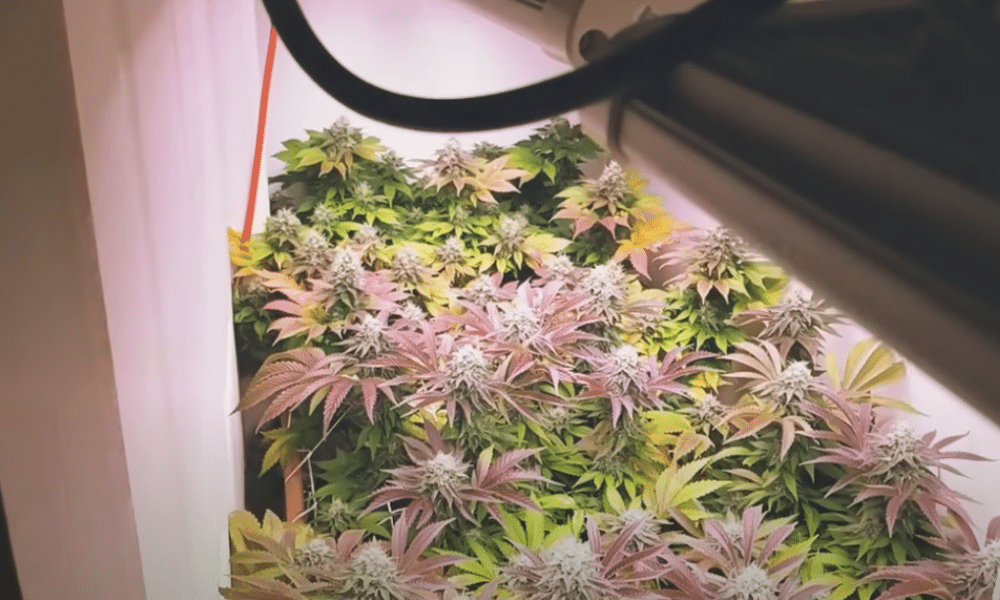
A light cycle of 18 hours on, 6 hours off allows time for your plant to rest and makes it easier on your power usage, saving you money. However, some cultivators feel that this light cycle is too short for autoflowers and doesn’t give the plant enough time to grow as much as possible, especially if you’re not using high-efficiency lights.
This light cycle works best during the seedling and vegetative phases for autoflower plants, saving your money on your energy bill and reducing your power consumption.
Since autoflowers are on a timer towards the flowering stage, giving the plant more light during flowering can increase average autoflower yields. The success of this light cycle is dependent on the strength of your grow lights.
12/12 light cycle for autoflowers

While this light cycle is best known for inducing flowering in photoperiod plants (and keeping your power usage low), it is not enough light for an autoflower – there simply isn’t enough time to produce high yields. Using a 12/12 light cycle on your autoflowers can result in small plants with smaller flowers and less trichome production.
Do autoflowers need darkness?
Autoflower plants in the seedling, vegetative, and flowering stages do not need darkness like photoperiod plants do.
The more light your autoflower plant consumes during seedling and vegetative, the larger your flowering yield is – but you can give a cannabis plant too much light, resulting in burned or droopy leaves, and a dehydrated plant.
Plants have specific chemical reactions that occur only in darkness that are important for overall plant health and pest resistance. Many cannabis growers consider rest important for plants, and offering a few hours of darkness for your autoflower plant may also help it grow.
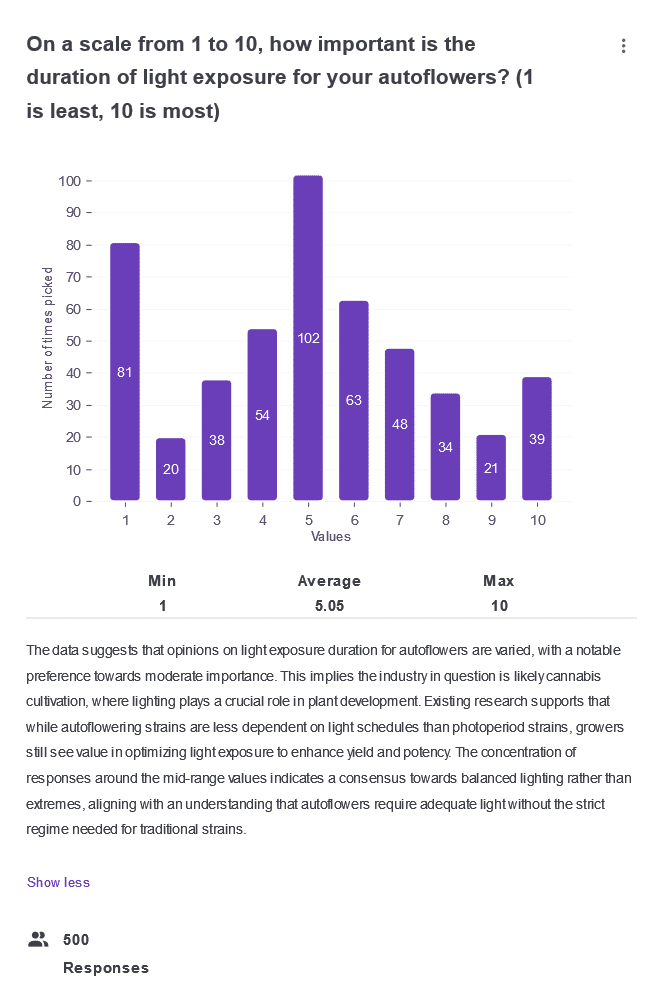
A couple of words about light spectrum
Although we cannot see the difference in colors on the light spectrum, it makes a big difference to plants. In fact, there have been studies done showing plants grow in a predictable way when specific light wave lengths are used. You can take advantage of this to help your autoflower plant grow as big as possible.
Blue light during vegetation
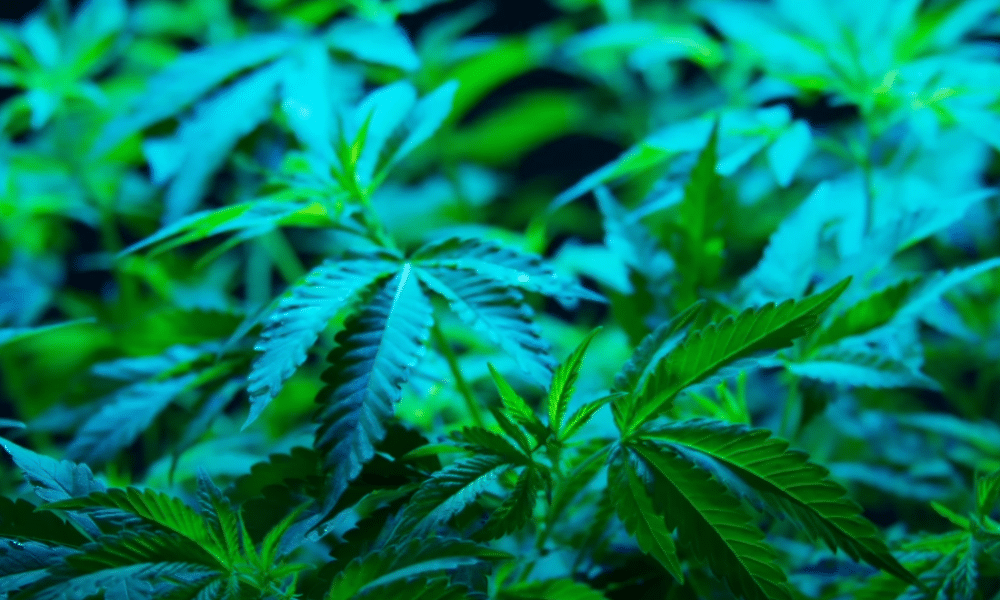
Blue light has many benefits for plants. It regulates the stomata, which controls water movement from the soil into the roots and out through the leaves. It also regulates CO2 uptake and affects growth. Autoflowers grown under blue light tend to have thicker stems, shorter intermodal spacing, and less branch stretching.
Red light during flowering
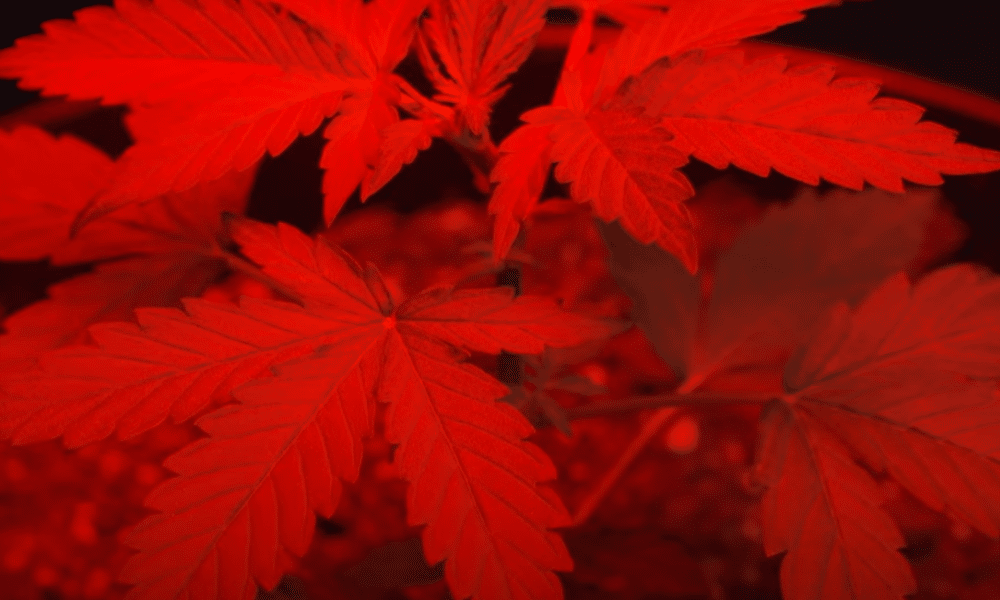
Red light is efficient in powering photosynthesis and has been shown to increase flower production, creating those large, sticky buds every grower dreams of.
Best lights for autoflower outdoor grow
Natural sunlight is the best option for autoflower plants grown outdoors. But if you need to extend the growing season in a greenhouse or supplement natural light, you can use CLF bulbs, or solar lamps. You don’t need LED light for cannabis grown outdoors.
CFL bulbs have a low heat signature, and can be placed close to the canopy, making them ideal for supplementing outdoor grown plants with lights. However, CFL bulbs must be plugged into a power source.
Solar lamps mimic the light spectrum of the sun, and many of them run off batteries or rechargeable solar power, and do not require an outlet.
Conclusion
In a recent research study, we surveyed 500 growers to determine the primary factors they consider when selecting lights for cultivating autoflowering cannabis plants. The results indicated that light intensity emerged as the top consideration among respondents when establishing a lighting schedule for autoflowers.
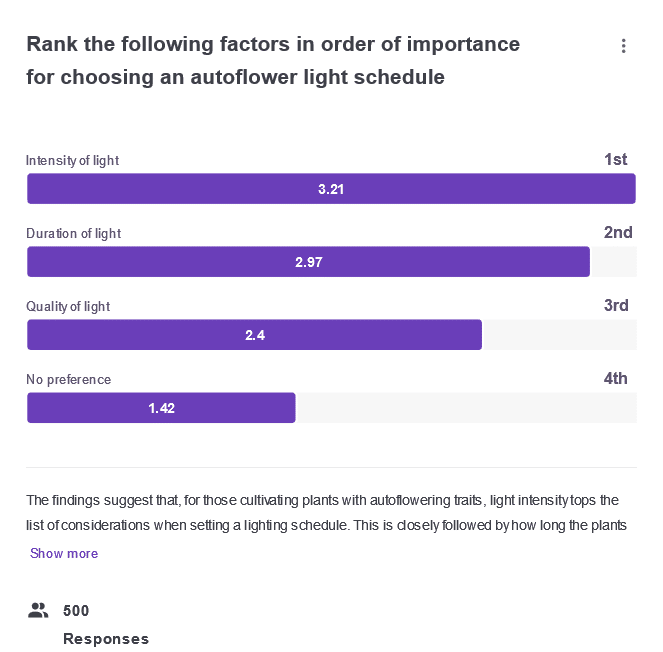
The ideal light schedule for autoflowers is 20 hours on, four hours off. This allows you to maximize your average autoflower yields, giving the plant as much light as possible while still allowing for a few hours of darkness a day.
FAQ section
Is 24 hour light bad for Autoflowers?
No, a 24-hour light cycle can be beneficial for autoflowers. Since these plants flower on a timed period, the more light they get during their growth, the bigger the yield.
What is the best light intensity for Autoflowers?
The optimal light intensity for autoflowering cannabis plants depends on the stage of growth and the type of lighting being used. However, a general guideline is to provide autoflowers with light intensity ranging from 600 to 1000 µmol/m²/s (micromoles per square meter per second) during the vegetative stage and around 1000 to 1200 µmol/m²/s during the flowering stage.
Can you grow Autoflowers with LED lights?
Yes, you can grow autoflower cannabis plants with LED lights. High-quality LED lights are popular with cannabis growers because of the range of light spectrum they provide, and their efficiency of usage compared to other lights.
Can Autoflowers grow without light?
No, autoflowering cannabis plants cannot grow without light. Like all plants, they require light for photosynthesis, which is the process by which they convert light energy into chemical energy to fuel their growth. Without light, autoflowers wouldn’t be able to produce the energy they need to grow, develop leaves, flowers, and ultimately produce buds.
Do autoflowers need a 12/12 light cycle?
No, the 12/12 light schedule is not enough time for autoflower plants to maximize growth or flowering time, and will result in smaller yields.


